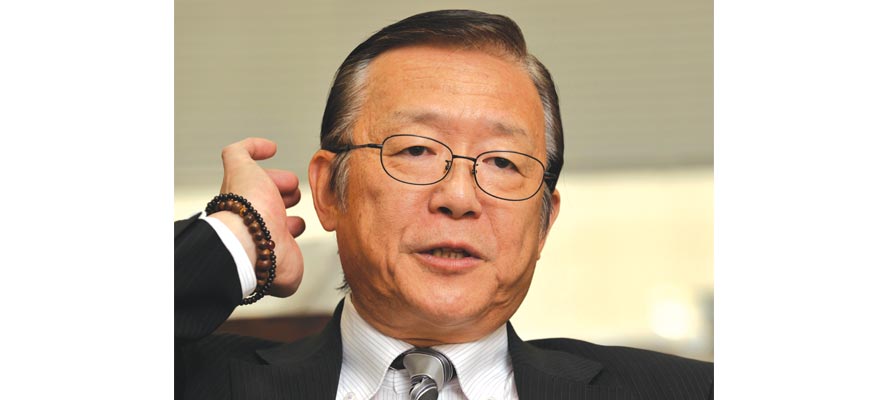Home > Highlighting JAPAN >Highlighting Japan June 2014>Revitalizing Japan's Regions
Highlighting JAPAN
Revitalizing Japan's Regions
An Interview with Shinobu Shiikawa
Regional Development: Issues, Successes and the Future

Regional development efforts are under way in localities throughout the country to spark a revival of the Japanese economy. What is the course toward regional revitalization in Japan, and where is the key to success? We asked Japan Center for Regional Development Chairman Shinobu Shiikawa, a leader in regional development who is well-acquainted with the situation on the ground.
What course has regional growth and development taken in Japan?
Since the Meiji period, Japan's approach to national development has been centered on extrinsic development. The nation remade itself to catch up with and surpass the system of the West, achieving growth centered on economics in accordance with market principles. In the process, we left behind the value of the unique culture and traditions held by Japan. A way of thinking where economic efficiency becomes the number one priority cannot make truly effective use of finite, high-quality local resources, and the good things that people started out with in local communities are being lost. Japan should now work on regional development and remake itself to leverage its unique culture and traditions.
I am therefore proposing "Neo-Endogenous Development." This means leveraging local talent and resources while bringing in talent, know-how and funds from the outside and working to bring all this together. With the recent decentralization and advances in information and communications technology, that is now becoming possible. The Japanese government is also providing support for human resource development programs and creating a system to attract external talent for that kind of human resource development and placement.
Could you give us some examples of success in local revitalization efforts?
An experiment by the village of Yanagidani, commonly called "Yanedan," in Kanoya City, Kagoshima Prefecture, used various events that focused on the welfare of the residents and raising children as a community. As a result, they have been covered a lot in the media as an effort at community-building and local regeneration that does not rely on government subsidies. Simply put, Yanedan created a big family of three hundred people. It is the sort of fulfilling community where everyone talks to each other and is on a first-name basis. In other words, they regenerated community bonds.
As a result, there is almost no crime, and the children are raised like siblings. The elderly work energetically and live out their lives without protracted illness. Medical and elder care costs are about 50 to 60 percent of Kanoya's average. They have curbed livestock pollution, cultured and commercialized an indigenous bacteria reported to improve vegetable harvests when added to fields, restored old Japanese-style houses, and attracted artist transplants, making Yanedan a good example of building a happy community to improve the welfare of local residents. They are even seeing success in industrial development, setting up to export traditional imo shochu (Japanese liquor made from karaimo—a kind of sweet potato) overseas. The population even reversed course recently, with the proportion of elderly now falling.
In Kochi Prefecture, too, a plan to have personnel from the prefectural office reside in local communities is bringing results. They match up local communities with outside talent and needs by, for example, introducing regional producers with certain specialty products to confectioners and famous chefs who make those products into appealing food and dishes.
Higashiomi City in Shiga Prefecture is also finding success, carrying out city planning for sustainable development while solving social problems with human connections and relationships of trust. They provide activity and an opportunity for social inclusion to disabled people and unemployed and socially withdrawn youth by restoring landscapes and forests using only volunteers.
What do you think is important for success?
What the successful examples have in common is the will to solve problems with human relationships instead of money, the self-reliance to try things out on their own first, and the existence of talented key people with a perspective encompassing both the inside and the outside of the local community. The know-how to resolve local challenges is found in other communities with the exact same experience. This means that you can find clues to the solution by looking "sideways," such as the local autonomy or region, rather than "upward" to the prefectural or national government.
If you want to promote regional development, it is important to visit the actual communities first. Instead of armchair debate, go there and actually feel the soil, make things, interact with the locals, and take the time to talk with a wide variety of people. The inspiration, passion and awareness you gain there will bring about innovation in regional development.
© 2009 Cabinet Office, Government of Japan






